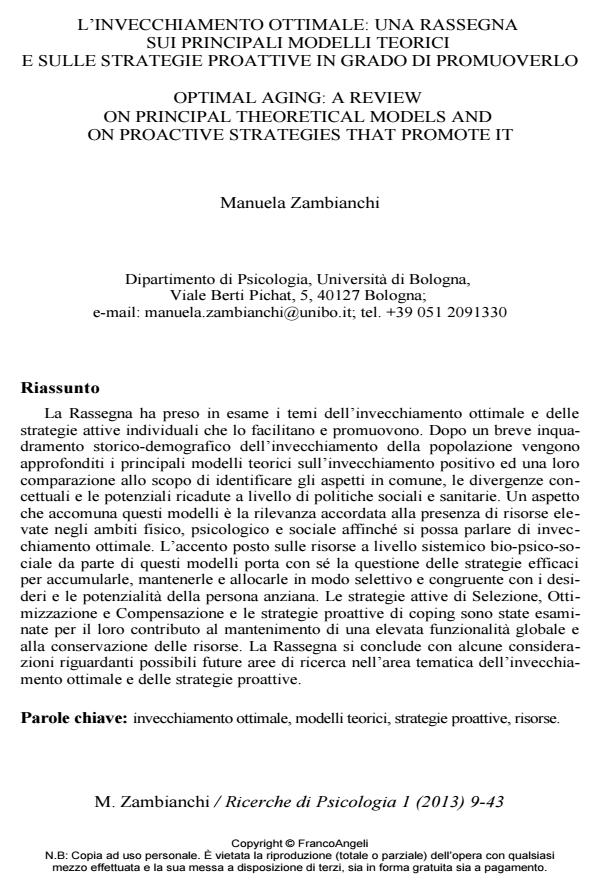L’invecchiamento ottimale: una rassegna sui principali modelli teorici e sulle strategie proattive in grado di promuoverlo
Titolo Rivista RICERCHE DI PSICOLOGIA
Autori/Curatori Manuela Zambianchi
Anno di pubblicazione 2013 Fascicolo 2013/1
Lingua Italiano Numero pagine 35 P. 9-43 Dimensione file 371 KB
DOI 10.3280/RIP2013-01001
Il DOI è il codice a barre della proprietà intellettuale: per saperne di più
clicca qui
Qui sotto puoi vedere in anteprima la prima pagina di questo articolo.
Se questo articolo ti interessa, lo puoi acquistare (e scaricare in formato pdf) seguendo le facili indicazioni per acquistare il download credit. Acquista Download Credits per scaricare questo Articolo in formato PDF

FrancoAngeli è membro della Publishers International Linking Association, Inc (PILA)associazione indipendente e non profit per facilitare (attraverso i servizi tecnologici implementati da CrossRef.org) l’accesso degli studiosi ai contenuti digitali nelle pubblicazioni professionali e scientifiche
La Rassegna ha preso in esame i temi dell’invecchiamento ottimale e delle strategie attive individuali che lo facilitano e promuovono. Dopo un breve inquadramento storico-demografico dell’invecchiamento della popolazione vengono approfonditi i principali modelli teorici sull’invecchiamento positivo ed una loro comparazione allo scopo di identificare gli aspetti in comune, le divergenze concettuali e le potenziali ricadute a livello di politiche sociali e sanitarie. Un aspetto che accomuna questi modelli e la rilevanza accordata alla presenza di risorse elevate negli ambiti fisico, psicologico e sociale affinche si possa parlare di invecchiamento ottimale. L’accento posto sulle risorse a livello sistemico bio-psico-sociale da parte di questi modelli porta con se la questione delle strategie efficaci per accumularle, mantenerle e allocarle in modo selettivo e congruente con i desideri e le potenzialita della persona anziana. Le strategie attive di Selezione, Ottimizzazione e Compensazione e le strategie proattive di coping sono state esaminate per il loro contributo al mantenimento di una elevata funzionalita globale e alla conservazione delle risorse. La Rassegna si conclude con alcune considerazioni riguardanti possibili future aree di ricerca nell’area tematica dell’invecchiamento ottimale e delle strategie proattive.
Parole chiave:Invecchiamento ottimale, modelli teorici, strategie proattive, risorse.
Manuela Zambianchi, L’invecchiamento ottimale: una rassegna sui principali modelli teorici e sulle strategie proattive in grado di promuoverlo in "RICERCHE DI PSICOLOGIA " 1/2013, pp 9-43, DOI: 10.3280/RIP2013-01001